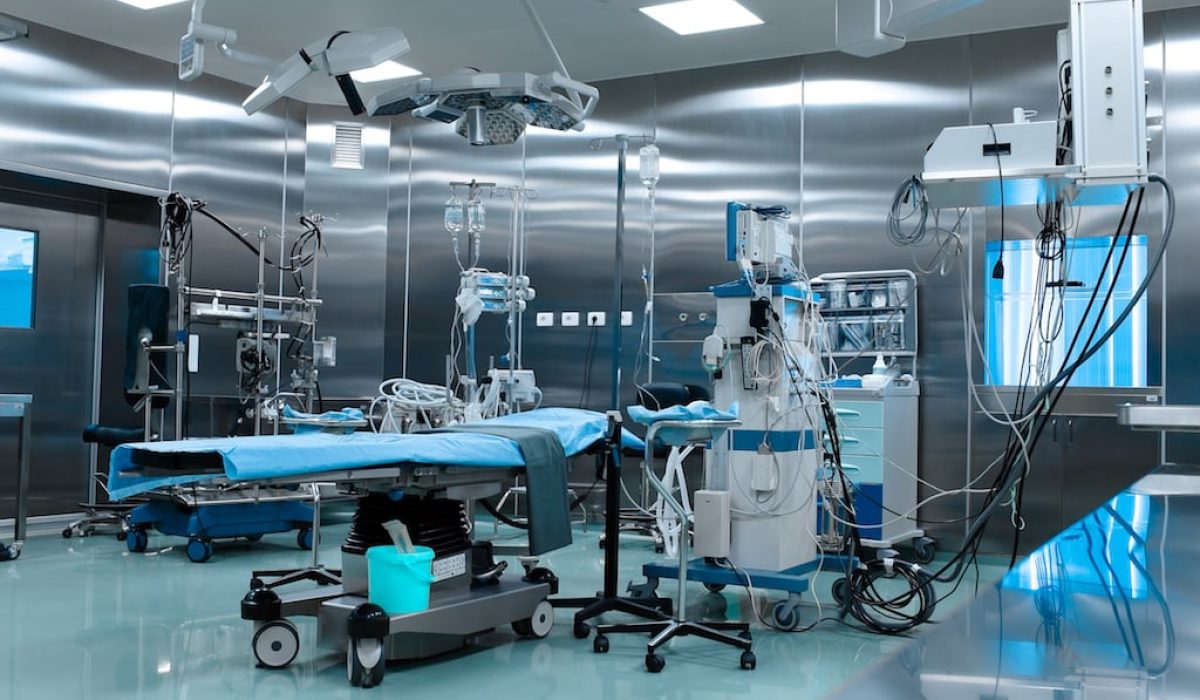
Some problems can seem unconquerable. Especially when they have remained unsolved for over 40 years despite new technology and the hard work of some of the brightest minds in their field.
A hospital network serving New England had just such a problem. And this was no ordinary organization. It includes one of the largest and most prestigious teaching hospitals in the world. And is consistently ranked as one of the best hospitals in the United States. It’s the kind of place where you can meet a Nobel Laureate in a staff meeting.
This hospital network has a strong culture of innovation. They embrace change. And they partnered with Scrum Inc. to solve that 40 year old problem. I was one of the consultants who helped them do just that.
Desired Outcome: Reduce Operating Room Turnaround Time
Every operating theater begins in a pristine state. Spotless. Sanitized. Safe for patients. But surgery is inherently messy. And that mess must be cleaned, and the room returned to that pristine state before the next surgery can begin.
The amount of time it took for a patient to be “wheeled out”, the room cleaned and reset, and the next patient “wheeled in” was averaging over an hour. That had remained static for more than four decades.
This was a problem for both patients and providers.
For patients, this long turnaround time meant longer waits for procedures, which can negatively affect patient outcomes.
For the providers, these same long turnaround times inhibit future investments in technology and growth since roughly half of any hospital’s revenue is generated by surgeries.
So improving the process of turning around an operating room leads to both better patient outcomes and boosts the revenue of a hospital. This is why our hospital partner wanted to cut the average turnaround time for an operating theater by an average of 15 minutes or more. Without sacrificing standards or safety.
Leadership Driven Change for Agility In Healthcare
We began our work standing in front of a blank whiteboard. Joining the Scrum Inc. team was the head of the hospital, head of the process improvement team, and other key stakeholders and team members.
Together, we began to diagram how the process worked. Step-by-step. This allowed us to gather all the requirements needed to turnaround an operating room. And identify all the teams and individuals involved. From the surgeon, nurses, and anesthesiologist, to the cleaning crew and other support staff.
This hospital has a large number of operation theaters organized into pods of three.
So we quickly identified the need to use Scrum@Scale in order to make sure any approach would be scalable.
We also formed both an Executive MetaScrum, which was in charge of the overall process improvement backlog. And an Executive Action Team, which was in charge of removing impediments to progress that other teams could remove on their own.
This buy in from leadership is always key.
Motivated and committed leaders help focus teams to achieve their objectives for better and more affordable patient care and experience. Without leadership at the forefront of this mission would doom it becoming slow, difficult, or even impossible to realize. Moreover, you can launch one small experimental team with marginal results.
Unquestionably, leadership charge is the way to go for faster value delivery.
And they are best suited to create clear communication pathways that ensure that all parties involved share needed information and commit to a new way of working.
Once this scaling pattern is set, now it is time to implement Lean and Agile principles.
- Begin to remove waste from the system by reducing status reports and anything that will impede rapid feedback and iteration in order to prove processes
- Sincerely listen to and encourage all levels of staff, often they have valuable information that can be used to make fast improvements
- Simply respond to change over following a plan. This means to question and challenge old methods and thinking and be open to safely experiment with new ideas
The Pilot: Coordination, Process, And Rapid Feedback
With leadership’s firm backing, we then began having conversations with all teams involved, everyone from medical staff and infection control to the cleaning crews.
And here’s what we discovered. These cross-functional teams were not communicating. And the cleaning crew itself didn’t feel empowered to speak up and identify impediments. And there were impediments to the process.
We soon learned that leadership was not aware of these problems because they felt there was no clear communication pathway for that kind of information.
We and our partners began using Scrum in a single pod of three operating rooms. The Innovative Sprints were structured around each individual surgery in order to drive innovation and focus on the specific problem at hand. Each consisted of The Daily Scrum, Sprint Review, and Retrospective, but each were held to five minutes or less.
These rapid conversations were also structured to gather, synthesize, and act on rapid feedback from each surgical team and the support staff.
The goal was to identify process improvements run as an experiment in each Sprint and bake them into the next surgery while still including a further experiment to reduce turnaround time.
The point here was extreme focus on a prioritized goal, identify any impediments, and include rapid feedback to drive outcomes.
For example, one nurse suggested that instead of taking all possible surgical instruments out of the packaging, they could focus on just opening what was likely to be needed for that particular surgery.
Another example came from the cleaning crew. They realized on their own that swarming on cleaning the room, instead of each working alone on each part, would decrease turnaround time and still meet all quality and safety standards.
Other experiments followed. How best to coordinate when a patient begins their trip to the operating room? How can we better prepare for the next surgery to come in? The process was treated like a patient. Diagnose the root of delays and treat not the symptom but the cause.
All the while our partners gathered information on what worked and what did not. And used this data to plot their path forward and set up the next process improvement experiment.
Agile and Scrum had come to the operating room. Change was taking hold without sacrificing quality, outcomes, or overburdening staff.
The results were undeniable. And repeatable for the hospital in a self-sustaining way.
And were all the more remarkable considering the time it took to finally solve the 40 year old unsolvable problem.
Result: Better Outcomes In Record Time
As a reminder, the goal was to cut the average operating theater turnaround time from around an hour to 45 minutes or less.
Our partners simply crushed that goal.
Here are some of the primary results:
- A new mark for the fastest turnaround time in the hospital was set at 30 minutes. All without sacrificing quality.
- The overall median turnaround time dropped to just 41 minutes. a 20% improvement.
- The average clean time for an operating room was cut to about 19 minutes. An improvement of 41%.
And, it’s important to note, these improvements solved a problem that had stubbornly persisted for 40 years.
So how long did it take us and our partners to decrease the turnaround time for operating rooms using Scrum?
Just two weeks. Without the need of changing or adding staff, technology, supplies, tools, or any other overhead.
And it didn’t stop there. The process continues to be iterated on and improved. Leadership in the hospital remains committed to Scrum and is continuously improving outcomes for both patients and the hospital system itself. And they have expanded the use of Scrum principles to include multiple aspects of the patient experience.
And here are just some of the quantifiable ways that Scrum helped the hospital and patients:
- This innovation has improved patient outcomes by decreasing wait times by increasing the availability of operating theaters while allowing the hospital to offer treatment at a lower cost.
- The number of possible surgeries per day has increased by 20%.
- That increase means this hospital network has a potential increase of $700 million per year without adding any additional overhead costs.


